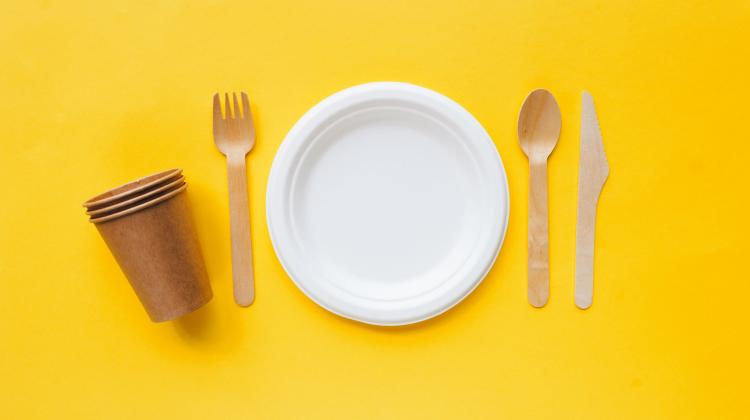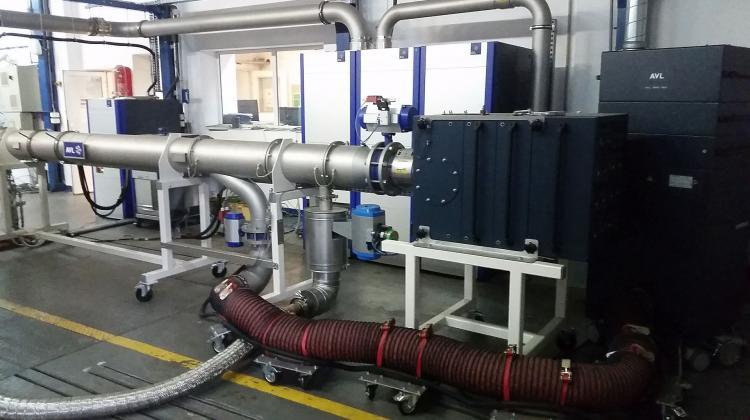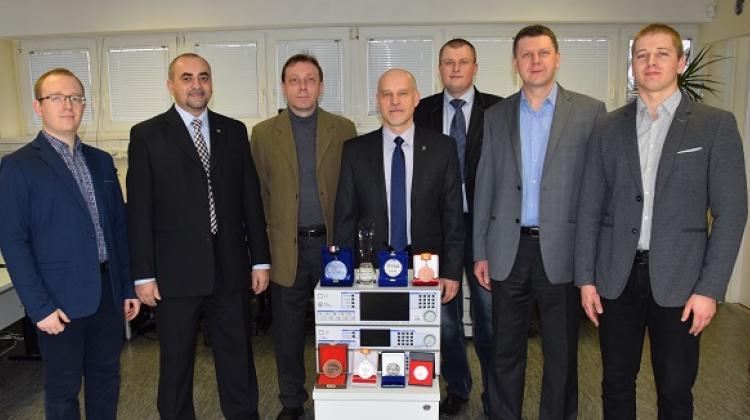Warsaw scientists work on environmentally and human-friendly edible packaging
 Credit: Adobe Stock
Credit: Adobe Stock
Food packaging does not have to be made of plastics that pollute the planet. It can be biodegradable, compostable and... edible. Scientists from the Warsaw University of Life Sciences are working on its production process.
The world we live in is full of plastic. There are no places left on the planet that are not polluted by this material. Plastics also dominate the food packaging industry, and because huge amounts of this type of waste are produced every day and their recycling is only partial, this has serious consequences for the natural environment and animal and human health. Plastics contain various types of compounds that may cause negative effects after they get into water, soil or organisms.
Scientists from the Warsaw University of Life Sciences noticed the need to create more environmentally friendly packaging substitutes. They have proposed alternatives that are biodegradable, compostable, and even edible.
So far, they have developed water-soluble sachets, biopolymer packaging +films+ and edible casings, similar to those used to cover, for example, kabanos sausages.
PACKAGING MADE OF EDIBLE BIOPOLYMERS
Packaging materials developed by a team at the university led by Dr. Sabina Galus from the Department of Food Engineering and Process Management of the Institute of Food Sciences, are from biopolymers. 'These include both biopolymers of plant origin, including apple and citrus pectin, sodium alginate, soy protein isolate, as well as those of animal origin, such as whey protein isolate, pork or beef gelatine,’ says Dr. Galus.
He adds: ‘The packaging materials are edible because they are made from ingredients intended for consumption, although, of course, this does not mean that you always have to eat them. They are also fully biodegradable and compostable, which makes them optimal for the environment. They can have various forms: from sachets for storing dry, loose products, to typical packaging films and to packaging that is an integral part of the product, i.e. coatings or glazing layers.
'The difference between edible film and coating lies in the production method,’ he continues. 'Both forms can be obtained from the same mixture of ingredients, but the films are usually created on flat surfaces and later removed, and the coatings are created directly on the product and constitute its integral part. The coatings may be removable from the product or should disintegrate during washing or technological processing.
SIMPLE TECHNOLOGY AND NUMEROUS APPLICATIONS
Biopolymers usually come in powder form. The Warsaw scientists have developed a method in which they combine it with a solvent (usually water), pour the resulting mass onto a selected surface and dry it until it forms a transparent, continuous structure.
Dr. Galus says that the resulting sheets can be as large as A4. They can then be cut to the desired size and transformed into sachets using heat sealers, or left as packaging film.
'We have created instant coffee sachets that can be put in hot water together with the product, and after stirring with a spoon, the sachet dissolves,’ the researcher says. 'In cooperation with scientists from Portugal, we also conducted research in which we wrapped meat in film produced in this way, additionally enriched with anti-microbial compounds: zinc oxide nanoparticles. We have observed that this type of packaging helps extend the product's shelf life.
‘These are the so-called active packaging materials. One of their applications is also the packaging of fruit, for example apples, right after harvest. After applying a thin protective layer in the form of active coating, it is possible to control the degree of fruit ripeness in storage.’
This treatment delays the ripening process and extends shelf life, thus reducing food waste.
Edible sachets can also be used to contain oil, sugar, stock cubes and a whole range of other products.
The scientists add that the work is continuing and although most of it is in the basic research phase, they already have promising results.
EDIBLE PACKAGING FROM FOOD WASTE
The same research team is also working on the use of vegetable waste to produce environmentally friendly packaging materials. It turns out that waste suitable for this purpose includes, for example: waste from green beans, broccoli, cauliflower and beetroot. In the latter case, residues after squeezing the juice can be used.
As in the case of biopolymers, larger sheets made from vegetable raw material can be transformed into edible sachets, as well as sushi sheets and healthy snacks.
Since vegetables themselves do not have gelling properties, an additive is required to plasticise the structure of the product. Biopolymers serve that purpose well. Glycerol is also added as a plasticiser. It adds moisture to the product, which is important to prevent the film from cracking.
ENVIRONMENTALLY AND HUMAN-FRIENDLY PACKAGING
The assumption and goal of the scientists is to find the best substitutes for plastic packaging materials. They hope that the research will end with the introduction of their products to the market.
'We are conducting research towards practical applications that will attract industry interest. The biggest weakness of biopolymer films produced by the casting method that we use is their low sensitivity to water, which is why we see greater application possibilities for dry products, including individual sachets for powdered products,’ says Dr. Galus.
She emphasises that the packaging materials developed by her and her colleagues will be fully environmentally friendly. When thrown away, they will easily biodegrade, but they can also be added to the composter or simply eaten. They will not have a negative impact on the consumer's health. Enriching them with various active substances will result in extending the shelf life of the products they contain and improving the quality of food. This, in turn, is intended to prevent wasting food.
PAP - Science in Poland, Katarzyna Czechowicz
kap/ agt/
tr. RL
Przed dodaniem komentarza prosimy o zapoznanie z Regulaminem forum serwisu Nauka w Polsce.



















